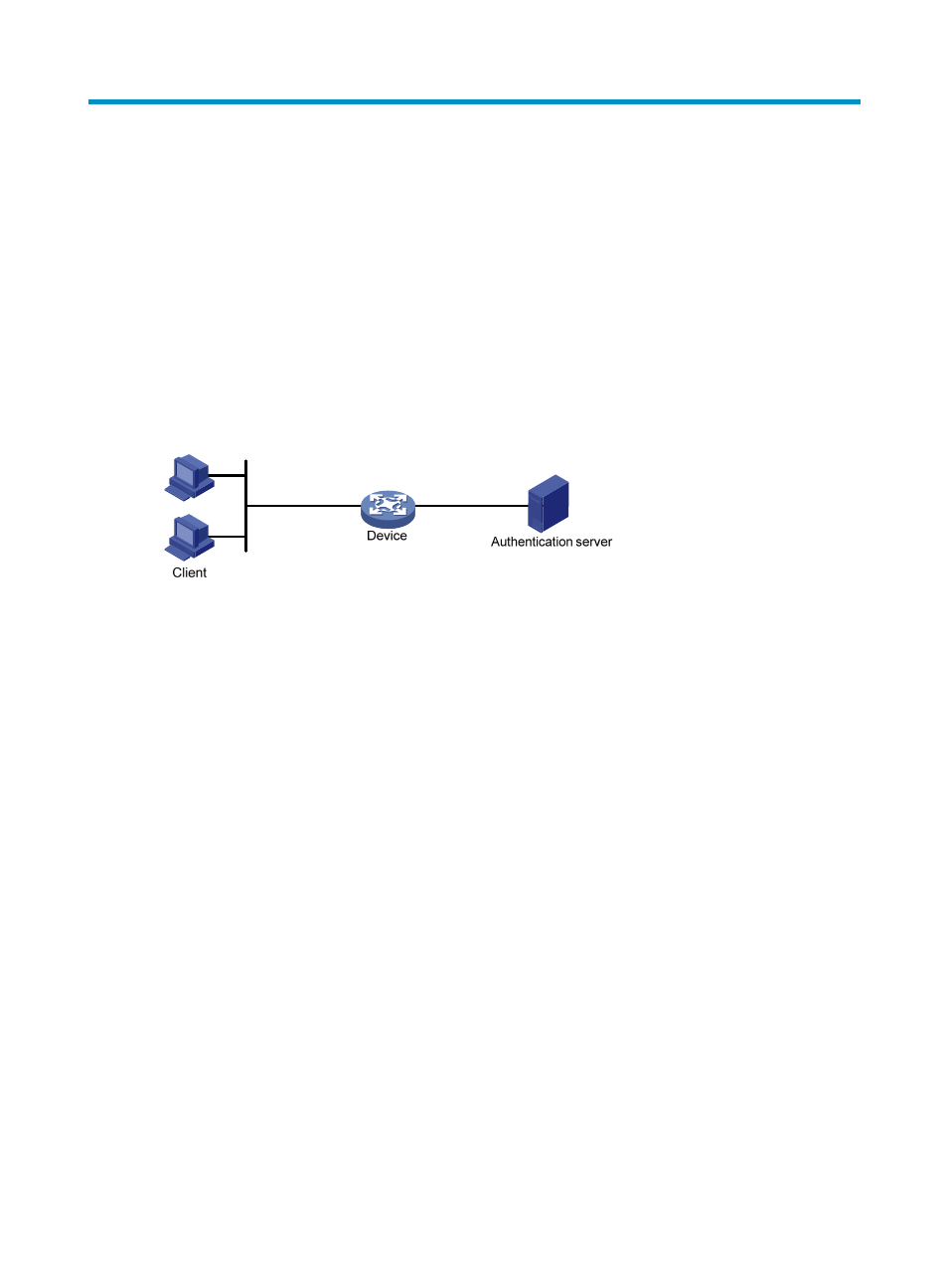1x overview, 1x architecture – H3C Technologies H3C S6300 Series Switches User Manual
Page 77

62
802.1X overview
802.1X is a port-based network access control protocol initially proposed for securing WLANs. It has
also been widely used on Ethernet networks for access control.
802.1X controls network access by authenticating the devices connected to 802.1X-enabled LAN ports.
802.1X architecture
802.1X operates in the client/server model. It includes three entities: the client (the supplicant), the
network access device (the authenticator), and the authentication server.
Figure 20 802.1X architecture
•
Client—A user terminal seeking access to the LAN. It must have 802.1X software to authenticate to
the network access device.
•
Network access device—Authenticates the client to control access to the LAN. In a typical 802.1X
environment, the network access device uses an authentication server to perform authentication.
•
Authentication server—Provides authentication services for the network access device. The
authentication server authenticates 802.1X clients by using the data sent from the network access
device, and returns the authentication results to the network access device to make access decisions.
The authentication server is typically a RADIUS server. In a small LAN, you can use the network
access device as the authentication server.
Controlled/uncontrolled port and port
authorization status
802.1X defines two logical ports for the network access port: controlled port and uncontrolled port. Any
packet arriving at the network access port is visible to both logical ports.
•
Uncontrolled port—Is always open to receive and transmit authentication packets.
•
Controlled port—Filters packets depending on the port's state:
{
Authorized state—The controlled port is in authorized state when the client has passed
authentication. It allows traffic to pass through.
{
Unauthorized state—The port is in unauthorized state when the client has failed authentication.
It controls traffic in one of the following ways:
−
Performs bidirectional traffic control to deny traffic to and from the client.
